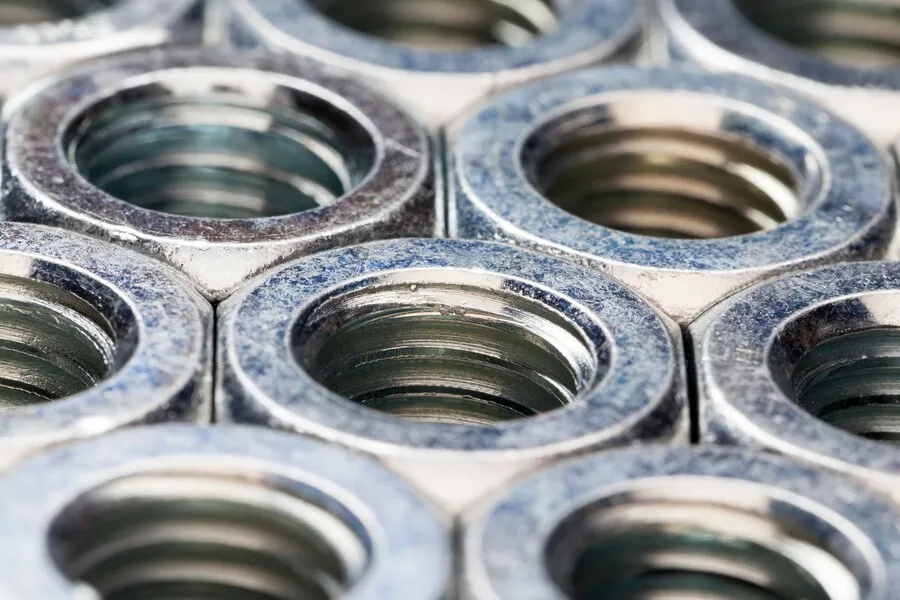Table of Contents
Key Takeaways
- Stud bolts and gaskets are essential to maintaining secure connections in various industrial settings.
- Proper material selection and installation are crucial for maximizing performance and safety.
- Advancements in technology are continually improving the quality and reliability of these components.
The Importance of Industrial Components
These components ensure machinery operates smoothly across numerous sectors, from petrochemical plants to massive manufacturing lines. Their primary function is safeguarding the connections between machinery parts, which is crucial for maintaining operational integrity. Preventing leaks and securing joints, stud bolts, and gaskets ensure that industrial operations can proceed without the interruption or hazards presented by equipment failure.
Stud bolts provide a reliable fastening solution to withstand substantial pressure and temperature variations common in industrial settings. When paired with gaskets, which effectively prevent leakage between joined surfaces, they form a robust system vital for upholding safety and efficiency standards. Without these components, the risk of machinery malfunction would exponentially increase, potentially leading to costly repairs and dangerous working conditions.
Materials and Selection for Optimal Performance
Selecting the suitable material is a cornerstone of ensuring that stud bolts and gaskets perform effectively. The selection process requires careful consideration of the specific environmental conditions the components will face. For instance, stainless steel is often lauded for its corrosion resistance and strength, making it an excellent choice for harsh and corrosive environments. Meanwhile, alloys can be engineered to offer tailored properties suitable for high-stress applications, providing exceptional strength without compromising adaptability. Components like stud bolts and gaskets are indispensable in the bustling world of industrial applications.
Carbon steel, though more cost-effective, serves well in applications with lesser demands. The key is to match the material properties with the operational requirements to maximize performance and durability while minimizing the risk of component failure. When specifying components for industrial projects, understanding these material characteristics and their benefits is crucial for engineers.
Best Installation Practices
Ensuring proper installation practices for stud bolts and gaskets sets a foundation for their longevity and reliability. This includes meticulous attention to torque specifications — an area where precision cannot be overemphasized. Additionally, it is paramount that surfaces are thoroughly cleaned and prepared before installation, as any contaminants can compromise the seal’s effectiveness and the connection’s integrity.
A comprehensive understanding and application of installation best practices can help prevent common pitfalls that might otherwise lead to premature component failure or leaks. Such practices reinforce the security of critical connections and contribute to prolonged efficiency and reduced maintenance costs in the long run.
Technological Advancements in Design
Industrial components are no strangers to the transformative effects of technological advancements. In recent years, innovations such as 3D printing have revolutionized the design and manufacture of stud bolts and gaskets. This technology enables greater precision and customization, allowing components to be designed specifically for unique applications. Moreover, advancements in alloy compositions have resulted in materials that offer enhanced durability and performance.
These developments lead to more efficient industrial operations and reduce downtimes and maintenance costs. As technology evolves, industrial hardware is poised to benefit from even more significant innovations to further improve the safety and reliability of machinery and equipment.
Also Read: The Ultimate Guide to Choosing the Best Hunting Waders for Your Needs
The Impact on Industrial Safety
Safety must be maintained in any industrial setting, and machinery integrity is critical to this equation. Reliable stud bolts and gaskets help substantially reduce the risk of unexpected machinery failures, protecting employees from potential hazards and ensuring seamless and uninterrupted production processes.
When machinery is consistently operational, workplaces can more effectively maintain safety standards and avoid the costly implications of accidents. Investing in high-quality components and rigorous maintenance protocols supports the overarching goal of industrial safety and operational excellence.
Case Studies: Real-World Application
Real-world applications testify to the critical role that stud bolts and gaskets play across various sectors. For example, the oil and gas industry often relies on these components to uphold the integrity of high-pressure systems. Several industry case studies have documented their implementation and success in diverse environmental conditions, demonstrating their ability to perform under stress while maintaining safety.
Such documentation highlights the effectiveness of stud bolts and gaskets and underscores their necessity in ensuring equipment reliability in challenging settings. These case studies are instrumental for future technological improvements and industry best practices, as they provide evidence-based validation of these components’ value.
Future Trends in Industrial Maintenance
The future of industrial maintenance is set to be shaped significantly by continued innovation in the design and function of components like gaskets and stud bolts. One promising trend is the integration of sensors into gaskets, allowing real-time monitoring of seal integrity. This technological enhancement enables maintenance teams to identify potential issues before they manifest into severe problems, significantly reducing the likelihood of unscheduled downtime.
As the industrial sector becomes increasingly competitive, such advancements will be pivotal in optimizing operations and enhancing safety protocols. These trends signify a step towards more intelligent, more efficient industrial maintenance strategies that leverage technology to prolong the life of essential components, ensuring they remain reliably operational over their intended lifespan.

